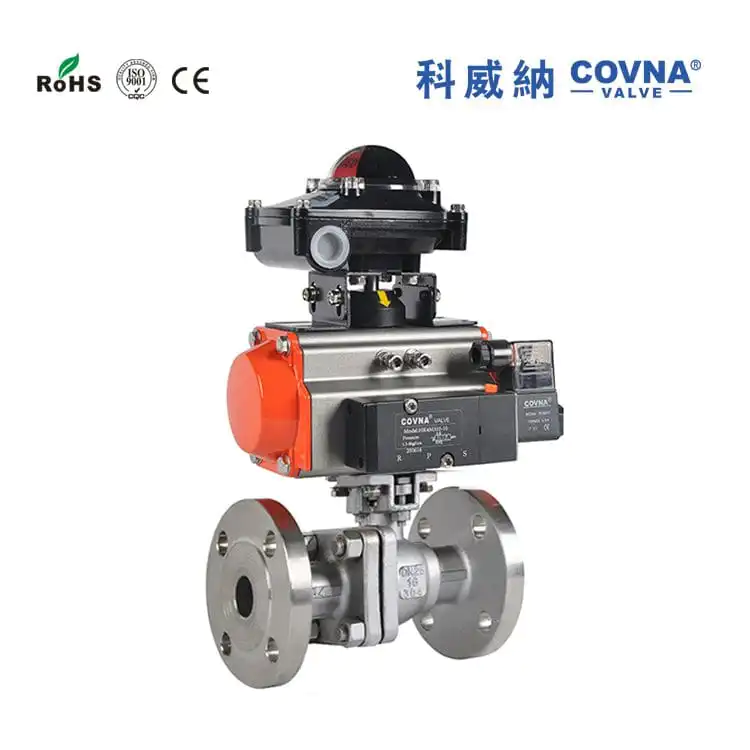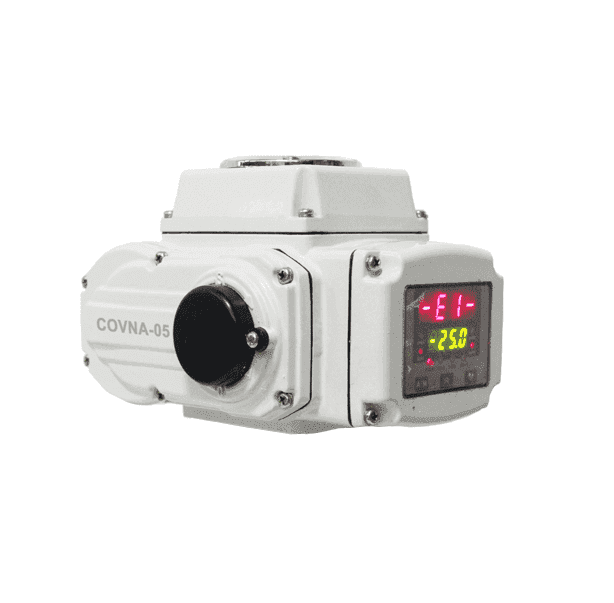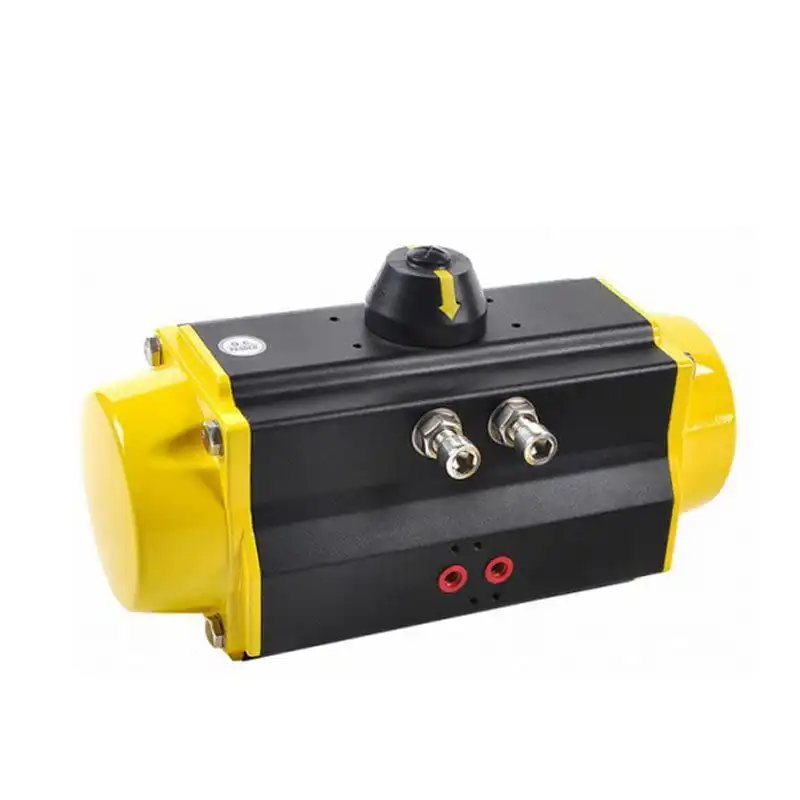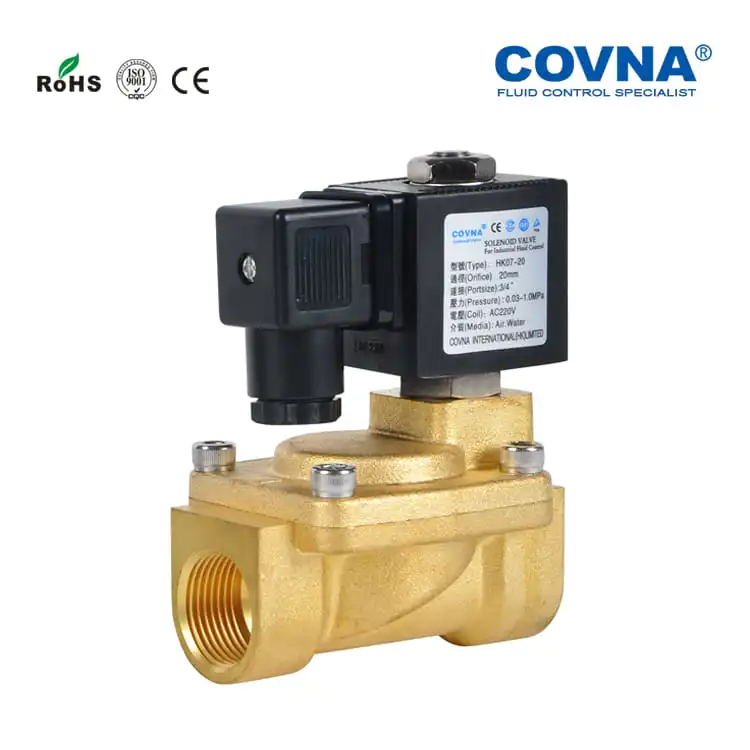COVNA Products
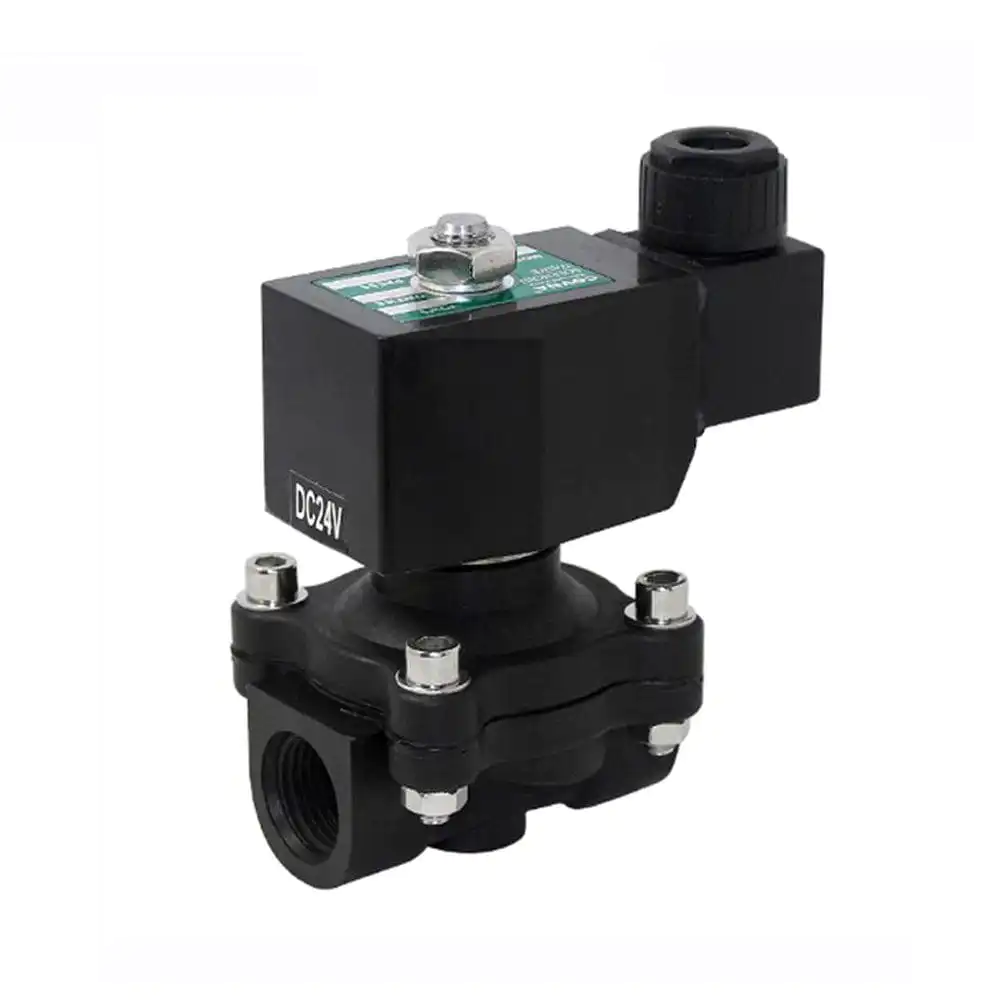

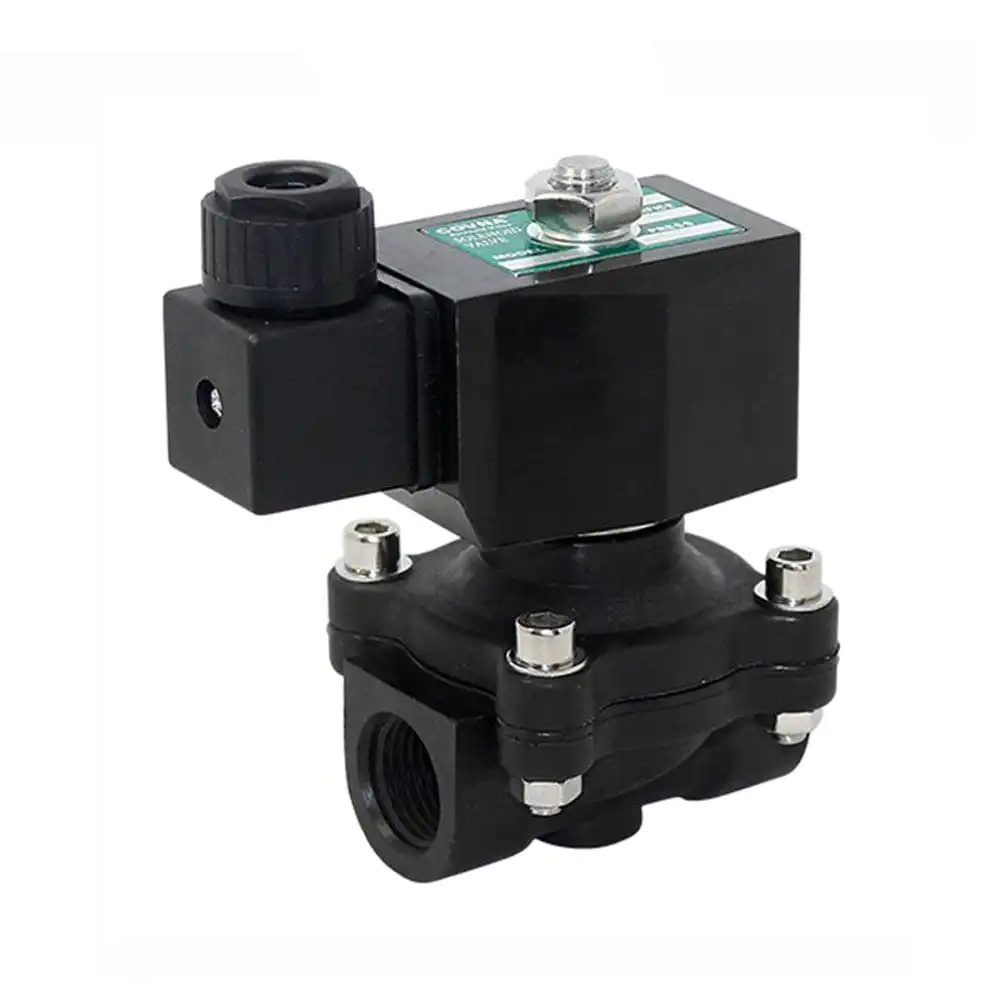
COVNA 2W21 Plastic PVC Water Solenoid Ball Valve
COVNA 2W21 series plastic solenoid ball valve, the action mode is direct pull diaphragm type, the switch mode can be normally open, the valve body material can be brass, stainless steel, characterized by large flow, zero pressure start, widely used in the automatic control of pipeline fluid with zero pressure differential start. It applied to low pressure system. Available in 12vdc, 24vdc, 110vac and 220ac.
COVNA provide solenoid valve in stainless steel, pvc and brass material in all pressure and all voltage.
- Model: 2W21 PVC
- Size Range: 1/2''~2''
- Pressure Range: 0.0MPa-1.0 MPa
- Material: Brass, Stainless steel, UPVC
COVNA 2 Way 2 Position Direct Acting Diaphragm Solenoid Ball Valve
- Features: Zero Leakage, Waterproof, High Pressure, High Temperature, etc
- Size Range: 3/8″ to 2″. Special size could be customized.
- Material: Brass, Stainless Steel and Plastic
- Suitable Medium: Water, Oil, Air, Gas and so on
- Light weight, low cost and durable. Widely used in car wash system, water treatment, and other applications.
- Pressure Range: Normal Pressure(0-10bar), High Pressure(0-250bar)
- Temperature: Normal Temperature(-10℃~80℃), Medium Temperature(-10℃~120℃), High Temperature(-10℃~180℃)
![]()
| Port Size | 3/8”, 1/2″, 3/4″, 1″, 1¼”, 1½”, 2″ | Orifice(mm) | 15, 20, 25, 32, 40, 50 |
| Port Connection | BSPP,BSPT, NPT, Flange | Function | Normally closed or opened |
| Pressure | 0.00MPa-1.0MPa | Voltage | DC-12V, 24V, AC-24V, 120V, 240V/60Hz; 110V,220V/50Hz |
| Temperature of media | NBR Seal: 0~80℃
EPDM Seal: 5~190℃ |
Suitable Media | Alkali Acid and salt etc |
| Material | UPVC, CPVC | Sealing Material | EPDM, VITON,NBR, PTFE |
| Coil | YC1B , 15W ( AC ) , 16W ( DC ) | ||
| Coil | YELB, start at 200W, maitain at 5W(AC),28W(DC) | ||
| Coil | YF1B, start at 350W, maitain at 10W(AC), start at 75W,maitain at 25W(DC) | ||

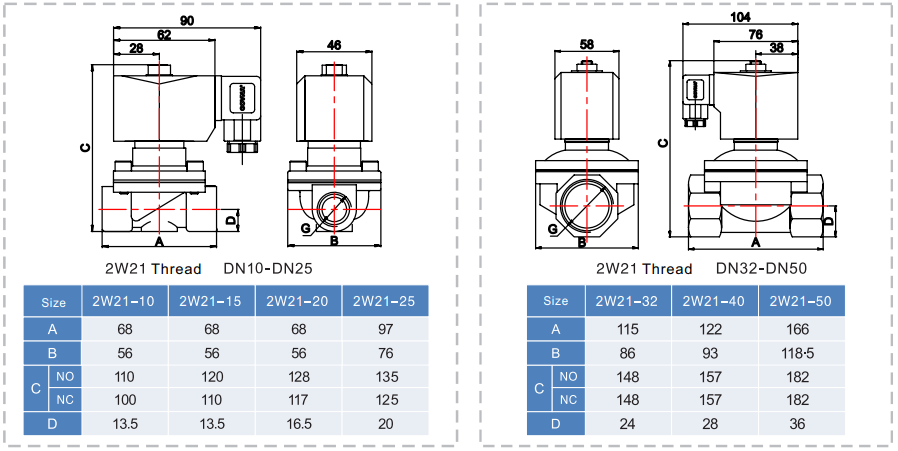
![]()
| Port Size | 3/8”, 1/2″, 3/4″, 1″, 1¼”, 1½”, 2″ | Orifice(mm) | 15, 20, 25, 32, 40, 50 |
| Port Connection | BSPP,BSPT, NPT, Flange | Function | Normally closed or opened |
| Pressure | 0.00MPa-1.0MPa | Voltage | DC-12V, 24V, AC-24V, 120V, 240V/60Hz; 110V,220V/50Hz |
| Temperature of media | NBR Seal: 0~80℃
EPDM Seal: 5~190℃ |
Suitable Media | Alkali Acid and salt etc |
| Material | UPVC, CPVC | Sealing Material | EPDM, VITON,NBR, PTFE |
| Coil | YC1B , 15W ( AC ) , 16W ( DC ) | ||
| Coil | YELB, start at 200W, maitain at 5W(AC),28W(DC) | ||
| Coil | YF1B, start at 350W, maitain at 10W(AC), start at 75W,maitain at 25W(DC) | ||
The actuator on my automated valve operates, but the valve won’t turn. Why?
Most likely the valve stem or actuator coupling is broken.
Why doesn’t my valve open or close completely when the actuator operates it?
The electric actuator limit switches or the pneumatic actuator position stops are not correctly adjusted.
When I energize the solenoid on my pneumatic actuated valve, the valve won’t turn. How come?
Probably because there is no air pressure to the solenoid or dirt has jammed it. Also, debris might be trapped inside the valve. Or, the air pressure is not sufficient to operate the actuator. Remember: measure air pressure at the actuator, not at the compressor.
Can I buy an actuator from one manufacturer and mount it to a valve from another manufacturer?
Maybe. First, be sure that the actuator torque output is sufficient to turn the valve reliably. Second, you will have to fabricate a custom mounting bracket and coupling to connect the actuator to the valve.
What happens if I lose power to my electric actuator in the middle of an actuation cycle?
The valve will stop somewhere between full open and close. When power is reapplied to the original circuit, the actuator will complete the cycle.
I ordered a fail open pneumatic actuated valve by mistake. I needed a fail closed one. What can I do?
To make the change just remove the actuator from the valve and turn it, or the valve stem, 90 degrees and remount the actuator.
I’ve installed my automated valve in the line, but now I don’t know if the valve is in the open or closed position. How can I find out?
Remove the actuator from the valve and check the valve stem. Most ball valves have stem flats at right angles to the flow when the valve is in the off position. On butterfly valves check the stem flow arrow marking.
Do I have to have the solenoid valve that controls the air supply to my pneumatic actuator mounted right on the actuator?
Remove the actuator from the valve and check the valve stem. Most ball valves have stem flats at right angles to the flow when the valve is in the off position. On butterfly valves check the stem flow arrow marking.
How do I wire up my electric actuator?
Check the electric wiring schematic that came with the actuator for the correct hookup. Sometimes a copy is inside the actuator cover. If it is missing, don’t guess about the connections. Call the manufacturer for a schematic.
I’ve just installed an electric actuated valve and when I power it, it turns the valve 360 degrees and won’t shut off. What’s wrong?
The actuator is wired incorrectly (check the schematic accompanying the actuator), or the external control switch is not the correct type for the actuator.
My electric actuators cycle time is way too fast, can I slow it down?
Not unless you bought it with an optional speed control.
I just replaced a solenoid valve with an electric actuated valve and it won’t work. Why?
Actuators and solenoid valves require different types of electrical control switches. SPDT for actuators, SPST for solenoids. Check the actuator wiring schematic for the correct wiring and switch type.


